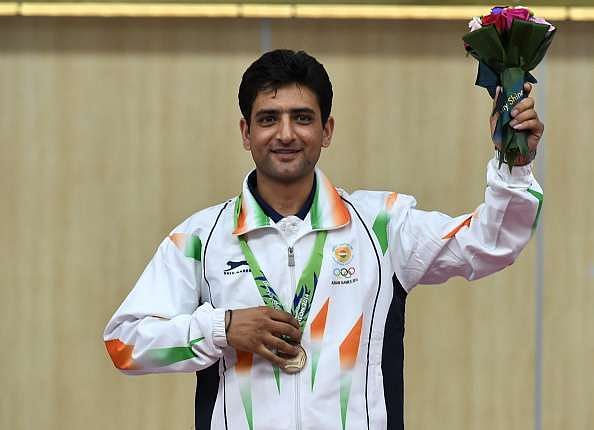
Rio Olympics 2016: All you need to know about the 50m rifle 3 positions

The 50 m rifle 3 positions event is a lot cooler than it sounds. As spectators, we see the best shooters from across the globe try their luck by shooting at the target in 3 different positions – kneeling, prone and standing.
The event will take place on 11 August for women and 14 August for men at the Rio Olympics 2016.
From India’s perspective, there has been a slight setback recently. The two Indians that qualified for the event are Gagan Narang and Chain Singh, with no Indian representative from India in the women category.
Chain Singh, an Army shooter, was recently hospitalised in Switzerland, where he was training with fellow Olympian Gagan Narang in Switzerland after he was diagnosed with pulmonary embolism and pneumonia.
Singh is aiming for a quick recovery and will be joining his fellow countrymen in Rio on 2nd August, a few days later than planned. Chain Singh is a promising candidate and has won the Bronze medal at the 2014 Asian Games at Incheon.
Gagan Narang won the Bronze medal at the London 2012 Games and also at the 2014 Commonwealth Games in Glasgow. He will be expected to help less experienced and Chain Singh in Rio.
What is the 50m Rifle 3 Positions event?
In the 50m Rifle 3 Positions, shooters are 50 metres away from their target and use a 5.6 millimeters calibre rifle. The event, as the name suggests, has athletes shooting from 3 different positions – kneeling, prone and standing.
The centre of the target is 0.75 metres above the ground, for which, shooters are permitted to use specialized clothing to stabilise themselves. The total diameter of the ring is 154.4 mm while the 4th ring is 106.4 mm and the 10th ring is 10.4 mm.
Qualification round
In this round, the athletes have to fire 3 sets of 40 rounds each – kneeling, prone, and standing positions. The time span for the sets is 2 hours and 45 minutes. For the women, it’s 20 rounds each per set with a time limit of 1 hour 45 minutes.
The score is calculated on a scale in which each shot is graded out of a possible 10 points making a maximum total of 1200 for the men and 600 for the women.
Final round
The rules for the final round are the same for the men and the women category.
The top 8 performing athletes from the qualification round advance to the final round where they can shoot up to 45 final shots.
Each of the shots possesses a maximum score of 10.9 points. There is an additional set of 10 rings within the 10-point circle that pushes up the score of 0.1 points as it reaches the middle of the target and thus making the highest possible score of 490.5 points.
The scores of the qualification rounds are no longer important for the qualified 8 athletes and have to start with a clean slate of 0 points. Initially, the final round has 3 series of 5 shots in the kneeling position with a time frame of 200 seconds with a 420 seconds changeover time.
The second set is in the prone position in which another 3 more series of 5 shots are fired within a time frame of 150 seconds with a 540 seconds break. The standing phase of the match encapsulates 2 series of 5 shots and the two lowest aggregate scorers are eliminated from the final and then consecutively placed 7th and 8th.
The final 5 shots (single) are on command and within 50 seconds. The Gold and the Silver medalists are decided by the final shot.
Indians at the event:
Men: Gagan Narang, Chain Singh
Women: None qualified
London 2012 result:
Men
Gold: Niccolo Campriani (Italy)
Silver: Jonghyun Kim (Korea)
Bronze: Matthew Emmons (USA)
Women
Gold: Jamie Gray (USA)
Silver: Ivana Maksimovic (Serbia)
Bronze: Adela Sykorova (Czech Republic)